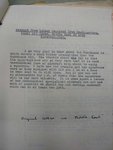Njaco
The Pop-Tart Whisperer
Summer of '44...hmmmmm. How experienced were these bomber pilots? I just read in Galland's autobiography that about that time he was working up pilot reserves for 262 and pulling pilots from Eastern Front to Western (requiring a new training program for the different tactics in that theatre). Many jabo pilots at that time really didn't know what they were doing and didn't have the experience.

